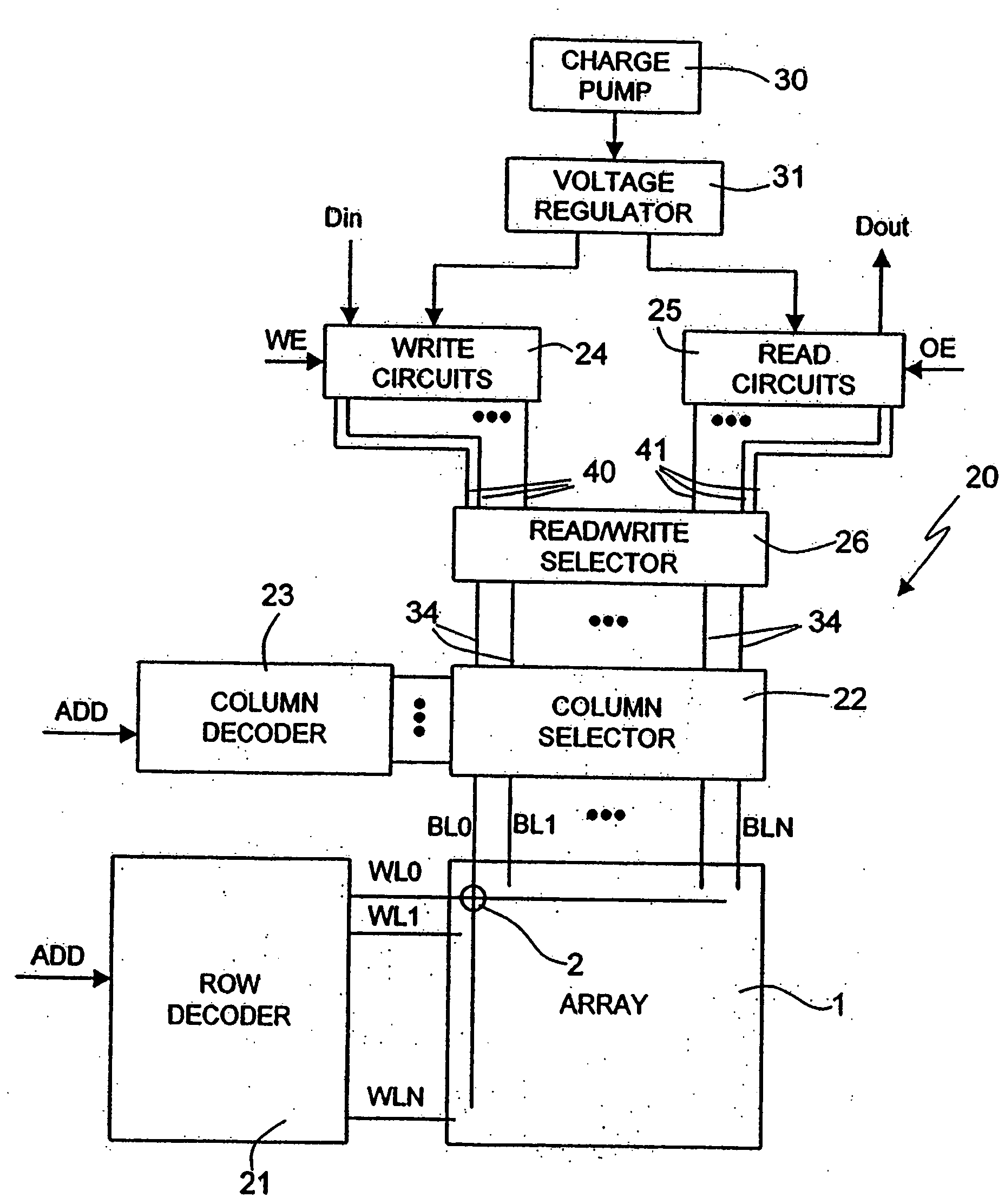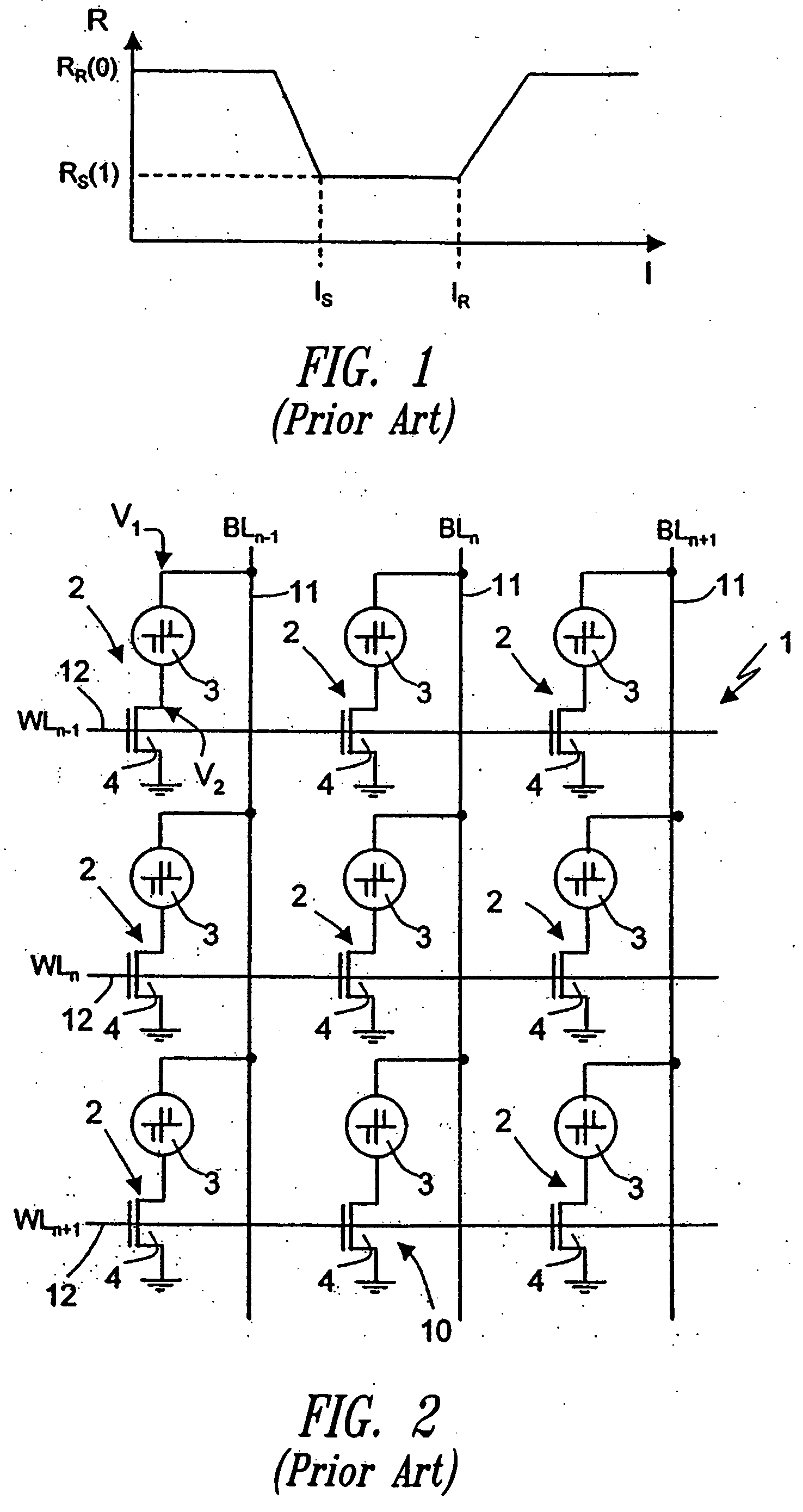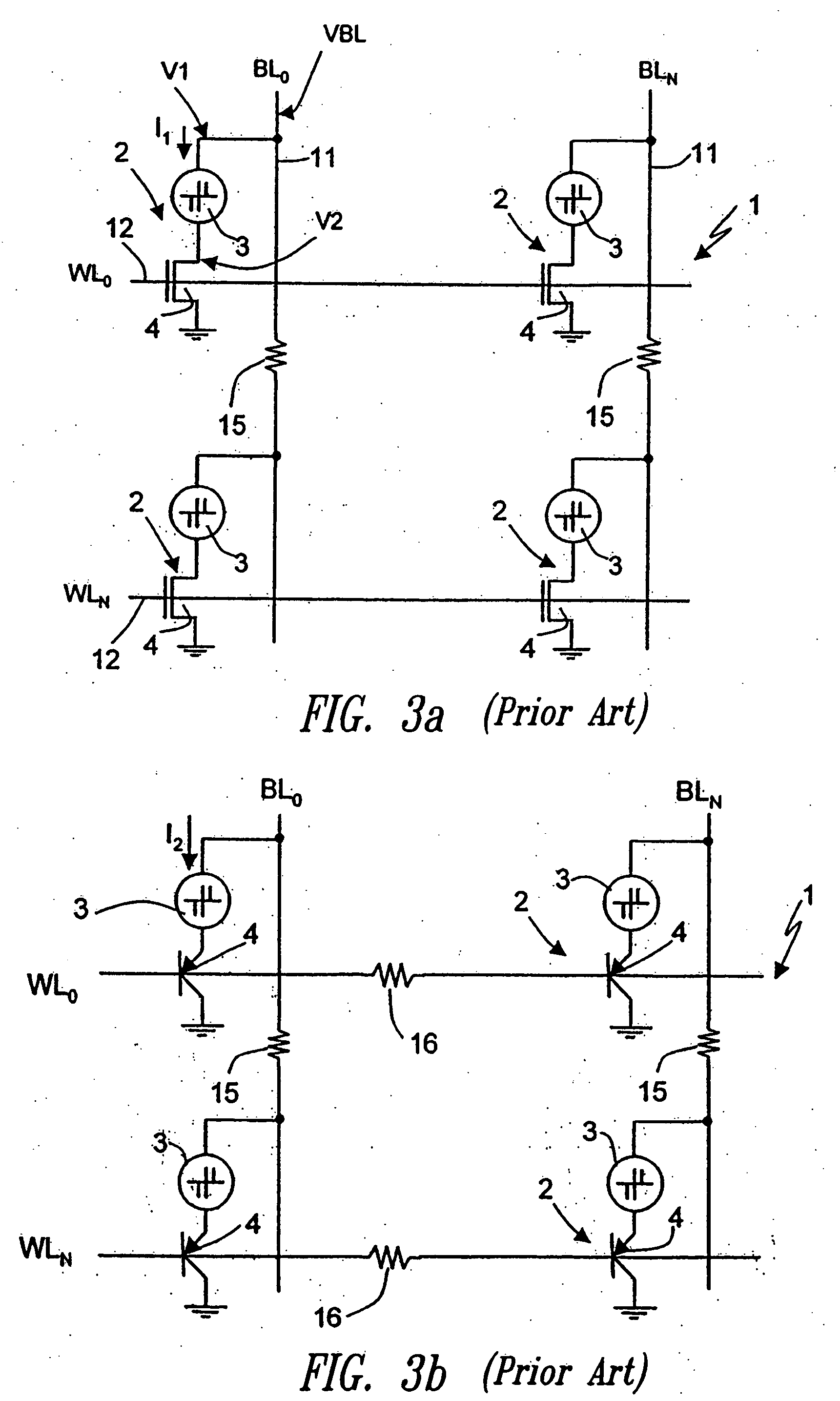Method of writing to a phase change memory device
a phase change memory and phase change technology, applied in the direction of digital storage, instruments, electrical appliances, etc., can solve the problems both during reading and writing, and the complexity of generating a precise read current of the order of magnitude of 1 a begins to get complicated, so as to reduce the width of the distribution of resistance values, the effect of simple discrimination and easy reading
- Summary
- Abstract
- Description
- Claims
- Application Information
AI Technical Summary
Benefits of technology
Problems solved by technology
Method used
Image
Examples
Embodiment Construction
[0040] According to FIG. 4, a phase change memory (PCM) device 20 comprises a memory array 1 having the structure illustrated in FIGS. 2 and 3a or 3b, the cells 2 whereof (only one shown in a schematic way) are addressed through wordlines WL0, WL1, . . . , WLN extending from a row decoder 21 and through bitlines BL0, BL1, . . . , BLN, extending from a column selector 22, illustrated in greater detail in FIG. 5 and controlled by column selection signals supplied by a column decoder 23.
[0041] The column selector 22 is moreover selectively connected to a write stage 24 or to a read stage 25 through a read / write selector 26, shown in detail in FIG. 5. The write stage 24 (described in greater detail hereinbelow) generates the currents necessary for writing. To this end, it receives a write enable signal WE and input data Din, and supplies currents of appropriate value to the column selector 22. The latter supplies these currents to the bitlines BL selected according to the column select...
PUM
 Login to View More
Login to View More Abstract
Description
Claims
Application Information
 Login to View More
Login to View More - R&D
- Intellectual Property
- Life Sciences
- Materials
- Tech Scout
- Unparalleled Data Quality
- Higher Quality Content
- 60% Fewer Hallucinations
Browse by: Latest US Patents, China's latest patents, Technical Efficacy Thesaurus, Application Domain, Technology Topic, Popular Technical Reports.
© 2025 PatSnap. All rights reserved.Legal|Privacy policy|Modern Slavery Act Transparency Statement|Sitemap|About US| Contact US: help@patsnap.com



